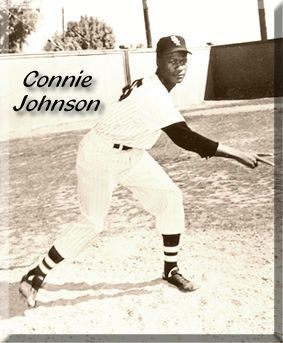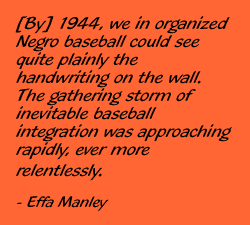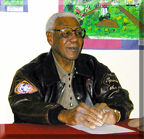
|
photo courtesy Negro Leagues Baseball Museum
|
"...the
advent of the 1951 baseball season, southerners were witnessing something
remarkable: blacks and whites interacting as equals on a regular basis
in a common endeavor. This very public display
of equality represented a first push against the steel door of racism
and segregation that permeated the South at that time" "When
the civil rights movement was just gathering steam in the early and
middle 1950s, baseball helped lead the way, integrating segregated ballparks
and teams years before Rosa Parks refused the orders of a Montgomery
bus driver to vacate her seat for a white passenger. But while
Dr. King and other civil rights leaders set out to integrate southern
society, the black men who broke the baseball color lines in Jacksonville,
Florida; Danville, Virginia; Tulsa, Oklahoma; Lake Charles, Louisiana;
and Savannah, Georgia, had less lofty notions of their tasks. They were
just ballplayers, playing in the South with the hope of moving up to
the major leagues someday. They were not civil rights activists per
se, but they were doing the same type of work as marchers demonstrators,
and ministers--opening up previously closed portions of society and
changing the attitudes and perceptions of those who watched them play
or head about their accomplishments" "...unlike
many southern minor-league team owners, Burnett was not interested in
bringing in black players merely as drawing cards to attract African
Americans to the ballpark. He wanted to improve his club by finding
a player talented enough to help him win. If that player was African
American, so much the better. Indeed, he felt that bringing integration
to the circuit would be his contribution to the cause of equal rights
for African Americans. He recalled the black friends who had sacrificed
for him when he began his career in the oil business. "I'm
indebted to the colored race," Burnett told the Dallas Express.
"
The
Kansas City Monarchs set a standard of excellence for the Negro Leagues.
The Monarchs, who had a special relationship with their home community,
were looked to as leaders and role models for urban youth. Players,
who knew that a good reputation was important in the struggle for integration,
were often asked to speak at gatherings of clubs such as the Young Men's
Progressive Club or the Twilight City League. |
||||||








